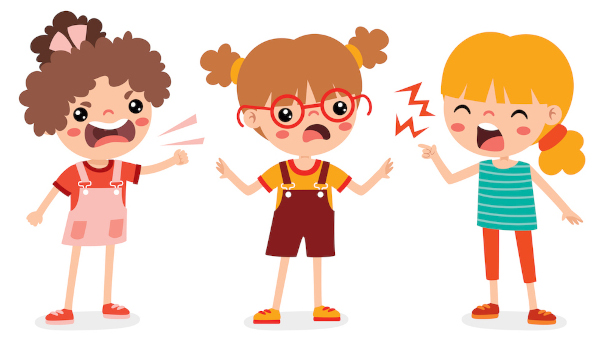“As the business owner, Kids Club HQ has saved me time and money. The registers are always up to date, even after last minute changes, and all staff have quick access to the latest registers. Invoicing clients is very straight forward.”

What does ‘conflict’ at your club mean?
In an environment where different minds work or play together conflicts are unavoidable. These moments of tension often feel overwhelming and might even make you want to run out the door! But whether you’re a pro at handling uncomfortable situations or someone who prefers a more passive approach, it’s crucial to know how to manage your emotions and take appropriate actions when dealing with conflict.
While children learn by observing the adults around them, demonstrating effective conflict resolution empowers them to grow into confident and secure adults. When working in or managing an out of school club, you’ll encounter various types of conflicts among different groups of people.
This article explores the types of conflicts you might face and how you can resolve them. We also share our free downloadable guide that provides strategies and tips for conflict resolution, giving you peace of mind and helping maintain a harmonious club environment.
Types of Conflict
Disagreements are normal, however, constant disputes or arguments can disrupt the fun and collaborative spirit these activities are meant to foster. Understanding the different types of conflicts can provide some perspective on resolving them.
Interpersonal Conflict: This type of conflict occurs between two or more individuals due to personal differences or disagreements. For example, debate over the approach to a team strategy in a sports club could lead to interpersonal tension.
Intragroup Conflict: Intragroup conflict happens within a group or team, often due to conflicting goals or competition. For example, if you run a holiday drama club, children might compete for lead roles, leading to jealousy or friction or at an out of school club where children might compete or fight for attention.
Intergroup Conflict: Occurs between different groups or teams within the club, stemming from competition or differing objectives. Usually, this type of conflict occurs when different clubs share the same space and have limited resources. For example, if you run an out of school club at a youth centre that’s already running an art or maths club.
Once you understand the nature of these conflicts, it’s also important to recognise how they can manifest in an out of school club setting.
Situations where conflict may arise at your club
Conflict Between Staff
Interpersonal Conflict: For instance, two staff members might have conflicting ideas on how to run a particular activity or may have different management styles that clash.
Intragroup Conflict: Within the staff team there could be conflict related to differing goals or competition for resources or recognition. For example, a manager might feel that their efforts are not equally recognised compared to their colleagues.
Conflict Between Staff and Parents
Interpersonal Conflict: Where parents disagree with a staff member’s decision regarding their child’s participation in an activity.
Intergroup Conflict: Although less common, this could happen if there are groups of parents with different expectations or demands that conflict with the staff’s operational plans or policies.
Conflict Between Staff and Children
Interpersonal Conflict: This can arise when a child disagrees with or feels unfairly treated by a staff member. For example, a child might feel singled out or unfairly disciplined, leading to tension between the child and the staff member.
Conflict Among Children
Interpersonal Conflict: Children might have personal disagreements or clashes. This could be due to differences in personality, interests, or competition over roles and responsibilities in club activities.
Intragroup Conflict: Conflicts can arise within a group of children, such as a team or club members, due to competition or differing goals. For instance, two sports teams might disagree on strategies or feel competitive tension.
Intergroup Conflict: This occurs between different groups of children within the club. An example might be a rivalry between two teams in a maths club or a competition between two groups in a talent show.
How to Resolve Conflict
Communication: Encourage open and honest dialogue to understand each party’s perspective. For example, schedule regular meetings where members can voice their concerns and suggestions in a structured and respectful manner.
Mediation: involves a neutral third party to help facilitate a resolution. This could be a club advisor, a senior member, or an external mediator trained in conflict resolution.
Compromise: Find a middle ground where all parties can agree. This might involve adjusting schedules, sharing resources, or rotating responsibilities to ensure fairness.
Collaboration: Work together to develop a solution that satisfies everyone involved. Encourage team-building activities and joint projects that require cooperation and mutual support.
Respect and Empathy: Maintain respect and show empathy towards others’ viewpoints and feelings. Promote an inclusive environment where everyone feels valued and heard.
By addressing conflicts promptly and effectively, out of school clubs can foster a harmonious and supportive atmosphere that allows children and staff to thrive and enjoy their extracurricular activities.
To gain a deeper understanding of how to resolve conflict between children, staff and parents, with strategies and tips for professional learning. Read more in our guide on conflict resolution strategies, you can find practical advice and a checklist that will help you comply with the EYFS framework and the CPD Framework. Sign up using the form below.